#castellani
Text
Tiaras at Ajuda Palace
Last summer the new Royal Treasury Museum within Ajuda National Palace in Lisbon was opened to display the Portuguese Crown Jewels. The new museum was built using insurance money from the 2002 theft of some of the jewels when they were on exhibition in the Netherlands and was part of a larger restoration project of the palace. Find out more about visiting here.
youtube
The museum features several tiaras and a lot of other jewelry like the emerald bow brooch below that I just had to include.
Queen Maria Pia's Diadem of Stars by Estêvão de Sousa, 1868 with later alterations
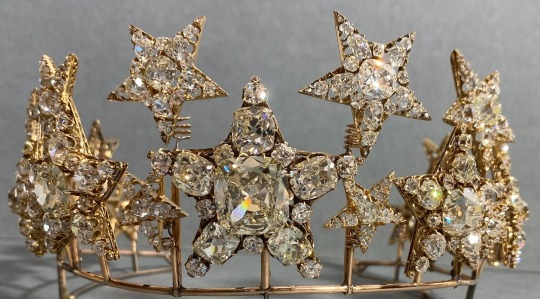
Queen Maria Pia's Laurel Wreath Tiara by Castellani, circa 1862 as a wedding gift from the city of Rome

Queen Maria Pia's Coral Tiara, circa 1862 as a wedding gift from the city of Naples

Queen Maria II's Sapphire Tiara, 1840s - This tiara is not part of the crown jewels and was sold at Christie's in 2021 for 1,948,558 USD but the new owner has loaned it to the museum.

Infanta Maria Ana's Emerald Bow Brooch, mid 1700s with later tassel addition

#tiara exhibition#Portuguese Royal Family#Queen Maria Pia#Queen Maria II#Queen Maria#Portugal#Castellani#coral#emerald#brooch#star tiara
96 notes
·
View notes
Text
#MosaicMonday:

Castellani (Italian, 1814–1930)
Micromosaic #lion brooch, c.1870
gold & glass, 3.5 x 4 in (8.9 x 10.2 cm)
Museum of Fine Arts, Boston 2021.756
"The imagery of this brooch may have been inspired by the lion's head depicted on a Roman floor mosaic discovered in the House of Doves in Pompeii."
#Castellani#Museum of Fine Arts Boston#Italian art#European art#19th century art#mosaic#micromosaic#jewelry#brooch#lion#feline#Mosaic Monday
21 notes
·
View notes
Text
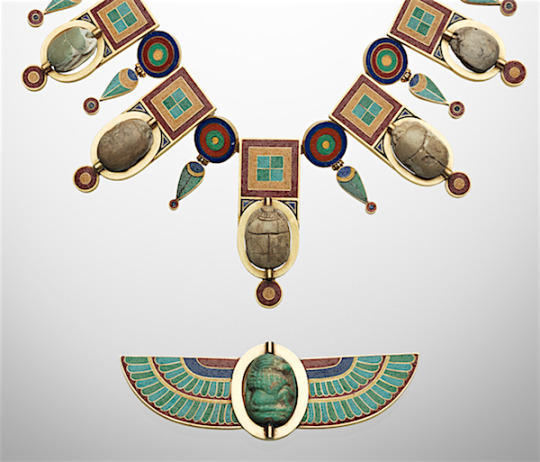
Necklace and Brooch by Castellani, Italian, Circa 1860
Gold, Glass and Scarabs
Photo Courtesy: Museum Of Fine Arts, Boston
Source: thejewelryloupe.com
#castellani#egyptian revival#egyptian revival jewelry#scarab#gold#high jewelry#antique high jewelry#luxury jewelry#fine jewelry#fine jewellery pieces#gemville
48 notes
·
View notes
Text
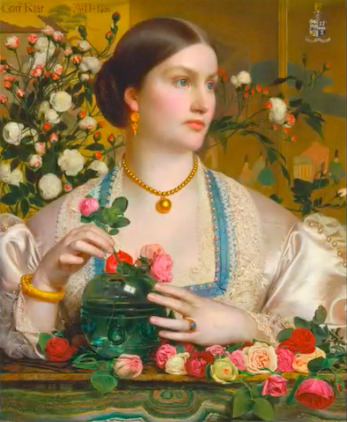


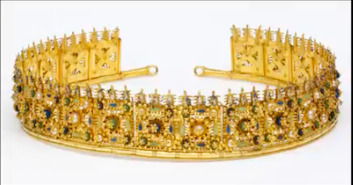
"Grace Rose" by Frederick Sandys (1866), "Bracelet" by Pasquale Novissimi, chiref designer of Carlo Giuliano (1860-70), "Marchese CAmpana Collection" bought for the Louvre by Napoleon III (1861) and "Etruscan Cumae Diadem" copied by Castellani (circa 1860-80) presented in “A History of Jewellery: Bedazzled (part 5: 19th Century)” by Beatriz Chadour-Sampson - International Jewellery Historian and Author - for the V&A Academy online, march 2024.
#conferences#inspirations bijoux#bijoux de tête#peinture#scarabee#Rose#Sandys#Novissimi#Giuliano#Campana#NapoleonIII#Castellani#ChadourSampson#V&AAcademy#Victoria&AlbertMuseum
4 notes
·
View notes
Text
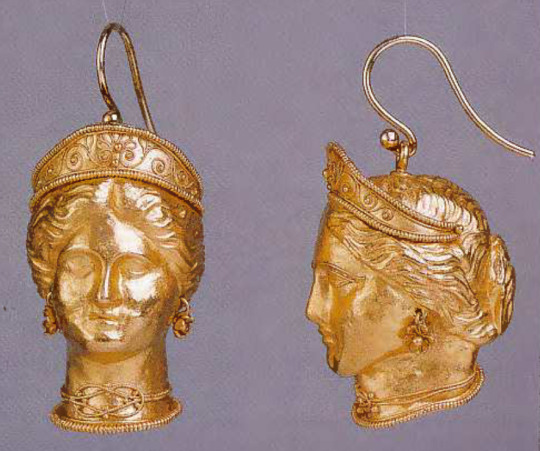
Pair of"Juno-head" earrings. Made by Castellani. Gold. French wires suspend the head and neck of a woman wearing a diadem, floral earrings, and a knotted necklace. The diadem and bottom of the neck are edged with beaded wire.
"It is [...] possible that one of the 'Juno-head' earrings is an ancient, but adapted object. This is suggested by various technical and stylistic variations, such as the treatment of the eyes and greater use of spiral beaded wire, and by a slight variation in gold composition, with the left one having gold of slightly lower purity. In addition, the other earring bears the Castellani double-C filigree monogram."
In Jack Ogden, "Revivers of the Lost Art: Alessandro Castellani and the Quest for Classical Precision." Castellani and Italian Archaeological Jewelry, p. 182.
12 notes
·
View notes
Text


Archaeological revival necklace and cravat pin
ca. 1880
Castellani
One of the purest expression of the nineteenth century’s interest in historical styles is found in the so-called archaeological jewelry produced by firms such as Castellani. Castellani looked to Etruscan, ancient Roman, Byzantine, and Medieval styles for inspiration for its jewelry, and it sought out ancient techniques as well as motifs for reinterpretation. Archaeological jewelry was extremely popular in Europe in the second half of the nineteenth century, and was actively acquired at the highest levels of society.
32 notes
·
View notes
Text
la casa museo di tarquinia ospita la collezione peruzzi, la più importante raccolta di opere seriali dell'arte italiana contemporanea
La Collezione Peruzzi
La più importante raccolta di opere seriali dell’arte italiana contemporanea
La Collezione Peruzzi è composta da oltre duecento opere seriali di arte italiana contemporanea, raccolte a cominciare dal 1980. Gli artisti sono stati selezionati sulla base della loro effettiva riconoscibilità internazionale e dell’organicità all’area di appartenenza, in modo da soddisfare il…

View On WordPress
#A.Pomodoro#Anselmo#art#arte#arte seriale#Baj#Beecroft#boetti#Bonalumi#Bonvicini#Botto&Bruno#Calderara#Calzolari#Casa museo di Tarquinia#Castellani#Castiglioni#Cattelan#Collezione Peruzzi#Colombo#Consagra#De Lucchi#Fabro#Frattini#Ingrand#Jacobsen#Kounellis#Le Corbusier#Magistretti#Mari#Marisaldi
0 notes
Photo

(Vía @neoreaccionario ) “Hoy se cumple un aniversario más del fallecimiento, de su encuentro con Dios, de Leonardo Castellani, gran sacerdote católico y patriota argentino. Intelectual de fuste, teólogo, filósofo, periodista, doctor en psicología, apologista católico, amante de las letras y gran escritor, al decir de Juan Manuel de Prada, “el Chesterton argentino”. Ignorado por la historiografía “oficial” y la “cultura oficial”, envidiado por varios de sus pares, perseguido y condenado injustamente por los jerarcas eclesiásticos acomodados a los vientos mundanos. Castellani, con su profunda visión de quién ama a la Verdad antes que todo, supo tener aciertos proféticos de la Argentina y del mundo. De ahí, el odio profundo que de la prensa local le tiene, enterrándolo en la “guerra del silencio”. Cuando puedo, en este espacio, busco reivindicar y promocionar a tan gran autor al cual recomiendo a mis lectores.” - #Castellani #NeoReaccionario #Catolicismo #CulturaCatolica https://www.instagram.com/p/Cp2WxrWOIiE/?igshid=NGJjMDIxMWI=
0 notes
Text
Duchamp e i suoi derivati
La poetica degli oggetti e l’arte del “potevo farlo anche io”, dalla Fontana di Duchamp alla Banana di Cattelan. Ma è arte questa? Aspettate a rispondere perché la questione non è così facile.
Alle origini, il dilettantismo
C’era una volta l’Arte di Giotto, di Cimabue, di Donatello, di Raffaello, di Michelangelo, di Caravaggio, di Canova e via dicendo, che piace tanto a tutti e guai a dire il contrario.La “rottura” con l’Arte più universalmente accettata, si può dire che inizia con due importanti invenzioni a seguito delle rivoluzioni industriali.
La prima grande invenzione è stata…

View On WordPress
#Banksy#Beuys#Burri#Capogrossi#Caravaggio#Casorati#Castellani#Cattelan#De Chirico#Duchamp#Fattori#Fautrier#Fontana#Giordano Amanda#Giovanni Anselmo#Hirst#Johns#Koons#Kosuth#Kounellis#Lonesome Town#Magritte#Manzoni#Matisse#Merz#Michelangelo#Monet#Pascali#Picasso#Pistoletto
0 notes
Text
Daisy Tiaras
Countess of Rosebery’s Diamond Daisy Tiara, circa 1830

Diamond Daisy Tiara by António Joaquim Póvoas, 1860s

Gold Daisy Bandeau Tiara by Castellani, late 1800s

Douglas Floral Tiara

Pearl Daisy Tiara by Chaumet

Crown Princess Margaret of Sweden’s Turquoise Daisy Tiara

Crown Princess Mette Marit of Norway’s Diamond Daisy Tiara, circa 1910

Daisy Chain Tiara by Garrard, 2016

La Flore Tiara by Mikimoto, 2017

Tiara Motifs 27 of ∞
#tiara motifs#tiara#floral tiara#daisy#Mikimoto#Chaumet#Garrard#Castellani#pearl#turquoise#diamond#Crown Princess Mette Marit#Crown Princess Margaret#Countess of Rosebery#United Kingdom#Norway#Sweden#Denmark#Liechtenstein
524 notes
·
View notes
Text

Los desastres sirven para purificar. Purificarse. Todo desastre es una prueba. Dejarse probar y salir probado»
Cristo ¿ Vuelve o no vuelve ? ( Padre Leonardo Castellani )
0 notes
Text

Etruscan Revival Necklace by Castellani Featuring A Woven Yellow Gold Chain Suspending A Fringe Of Lozenge Shaped Turquoise Micro Mosaic Drops
Photo: 1stdibs
Source: thejewelleryeditor.com
#castellani#castellani necklace#micro mosaic jewelry#turquoise#yellow gold#etruscan#etruscan revival jewelry#high jewelry necklace#high jewelry#luxury jewelry#fine jewelry#gemville
55 notes
·
View notes
Text
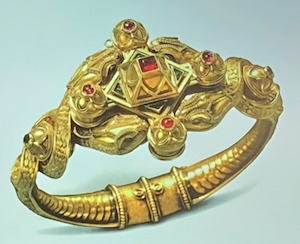
Bracelet “Serpent” d'Auguste Castellani (circa 1860) présenté à la conférence “Les Serpents dans la Joaillerie” par Gislain Aucremmane - Historien de l'Art et Directeur Conservateur du Patrimoine de Bulgari - à GemGenève, novembre 2023.
6 notes
·
View notes
Text


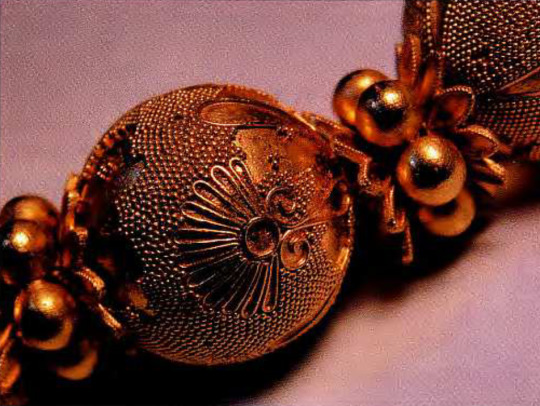
Necklace of granulated spheres. Made by Giacinto Melillo. Gold. Private collection.
"When Alessandro [Castellani] noted the hackly surface [on ancient Etruscan jewellery] where granulation was missing, it led him to investigate ways in which the solder filings might be introduced under rather than over the grains and filigree wires. On Castellani (and Melillo) jewelry with areas of powder granulation, the joints between the more substantial components of the jewelry reveal conventional solder seams, but the localized powder granulation shows evidence for soldering with very fine solder particles. These particles tend to be present among the granules and filigree, not on the neighboring components, and to be more in evidence under the grains than over them.
"Such an appearance would be all but impossible to produce with the traditional solder-sprinkling technique. One way it could be achieved was if the solder and flux particles were mixed with the gum or glue and painted onto the required area of the sheet gold and then the grains positioned on this. With the finest grain sizes it might even have been possible to mix grains, solder particles, ground flux, and glue together and "paint" all into position in one operation. An oil such as lavender oil, as used by painters in enamel, could have been substituted for the glue. If Alessarndro did use such a process to apply his solder it would have been a major change from the way in which filigree was traditionally soldered--and far more akin to contemporary enameling techniques with which he was also experimenting in the 1850s."
In Jack Ogden, "Revivers of the Lost Art: Alessandro Castellani and the Quest for Classical Precision." Castellani and Italian Archaelogical Jewelry, pp. 190.
#Victorian#jewelry#jewellery#Victorian jewelry#19th century#Castellani#necklace#granulation#powder granulation#gold#1850s#Giacinto Melillo
10 notes
·
View notes
Photo

#schlossgarten #schlösser #castello #castellani #castle #castella #castell #burg #building #buildings #gebäude #haus #house #bassesaxe #burgen #castlegarden #castles #châteaux #chateaux #chateau #festivale #festivalo #festival @mrgeorgeclarke #замок #landhousestyle #osnabrückerland (at Schloss Ippenburg) https://www.instagram.com/p/BzEOeM5Cris/?igshid=NGJjMDIxMWI=
#schlossgarten#schlösser#castello#castellani#castle#castella#castell#burg#building#buildings#gebäude#haus#house#bassesaxe#burgen#castlegarden#castles#châteaux#chateaux#chateau#festivale#festivalo#festival#замок#landhousestyle#osnabrückerland
0 notes

